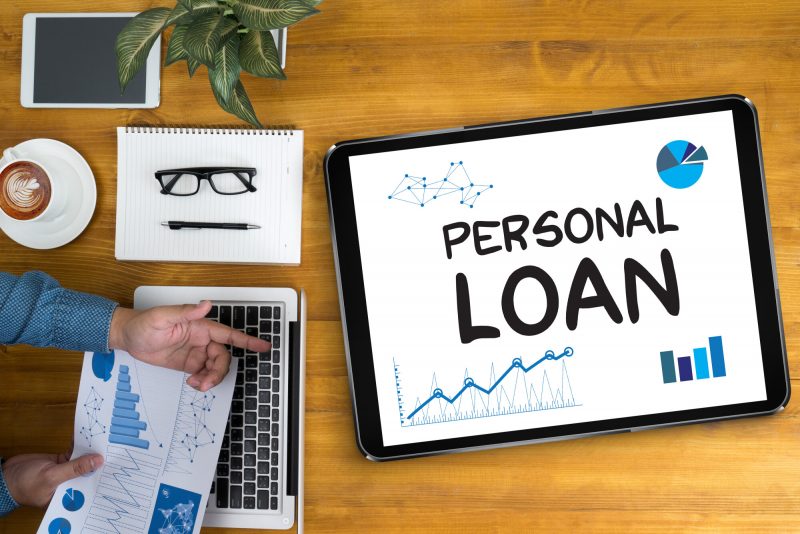Did you know that almost a quarter of adults in the United States have an active personal loan? Many of them (28%), in turn, took out such loans to finance large purchases. Others used the funds to consolidate debts, improve their homes, or refinance debts.
So, if you need to borrow money yourself, it’s best to know the types of personal loans you can get today. That way, you’ll know if your personal finances make you an eligible borrower. Moreover, it can help you prepare the requirements before applying for a loan.
To that end, we created this comprehensive guide on some of the best personal loans (and which ones to avoid). So, keep reading to learn your options, especially if you need emergency funds.
Unsecured Personal Loans
Unsecured personal loans, also called signature loans, don’t require collateral. Instead, lenders usually base their lending decisions on the borrower’s creditworthiness. Factors like credit score, repayment history, and existing liabilities often determine one’s creditworthiness.
As such, a lender may deem you creditworthy if you have a good credit score and clean credit history. By contrast, they may not be keen to lend you money if you have a bad credit score and history. After all, they have no fallback to rely on if you default on the loan, seeing as they will lend without collateral.
The good news is that if you meet the qualifications, you can pay back what you owe in increments. How long you have to pay back the loan depends on the term you qualify for, but in most cases, it can be from 12 to 60 months. Either way, you’d have to make monthly payments throughout the loan’s term.
However, note that the shorter the loan term you choose, the less you’ll pay toward interest fees. At the same time, your monthly payments will be bigger, as you have fewer months to pay back what you owe.
By contrast, the longer the loan term, the smaller the monthly installments. You may find that easier to pay, but it also means your loan will cost more since you’ll pay more toward interest fees.
Payday Loans
Payday loans are short-term micro-loans with amounts usually ranging from $100 to $1,000. They’re like unsecured personal loans, as they don’t require collateral, either. However, borrowers have to pay back the entire loan, plus other fees, within two to four weeks from the issue date.
Payday loans have requirements less stringent than those of traditional loans from banks. That’s why lenders often market them to borrowers with subprime credit. With one in three US consumers having subprime credit, it’s no wonder these loans are popular.
What’s more, lenders usually issue payday loans the same day of the application. So, if you apply today, you most likely will receive the money before the day ends. Some lenders even have 100% online application, approval, and fund disbursement processes.
However, payday loans can be costly, as they come with high-interest rates. For instance, their annual percentage rates (APRs) can reach more than 600% in some states. That’s 40 times higher than typical credit card rates.
That’s why you should consider payday loans as your last resort and only if you need emergency funds. If you still decide to take one out, be sure to pay it back on or before the due date. That way, you won’t have to shell out even more money for surcharges or late fees.
Secured Personal Loans
Secured personal loans are those that require you to pledge an asset in exchange for the loan. The asset, called collateral, secures the loan in case of non-repayment. So, failure to pay back the loan will result in the lender seizing the property used as security.
An example of a secured personal loan is a car title loan, in which the title of the vehicle serves as the collateral. If the loan goes unpaid, the lender can then “repossess” the car as payment for the debt.
Another example is a pawnshop loan, wherein you pawn an item of value in exchange for a small loan. Like a title loan, failure to pay back the loan gives the pawn lender the right to seize your asset.
A home equity loan is also a form of secured loan, as it uses the equity you have in your home as collateral. That’s different from the loans you can get from a hard money lender, though. A hard money loan is a secured loan in which the funds go toward buying a property.
Either way, not paying back a home equity loan or a hard money loan can lead to foreclosure. That’s because they use part of or the entire property as collateral.
The advantage of secured personal loans is that they can be easier to get than unsecured loans. After all, secured loan lenders can still get their money back by selling the collateral. So, they incentivize borrowers by making their lending requirements less stringent.
Personal Loans for Specific Purposes
These include medical emergency cash loans, home improvement/repair loans, and wedding loans. As they’re for specific purposes, you need to prove that you’ll use the loan for that reason alone.
For example, suppose part of your roof got damaged in a recent storm. In that case, you might end up looking at repairs that can cost close to $1,000 on average.
If you can’t shell out that money in one go, you can apply for a home repair loan. However, you likely need to acquire an estimate written by a roofing contractor first. That can then prove that you will use the loan money to get your roof fixed.
Debt Consolidation Loans
A debt consolidation loan is a loan meant to pay off existing debts. For example, you can use one to pay off another active personal loan and credit card debts. Either way, the new loan can cover some of your existing financial obligations.
A debt consolidation loan may make sense if your other debts have high-interest rates.
For example, let’s say you have an active personal loan with an APR of 30%. Let’s also assume that you have two credit card accounts with 20% APRs. Those rates are high, so they can make your debts a pain to pay back.
In that case, you may want to apply for a debt consolidation loan, so long as you can secure one with a lower rate. For instance, you may be able to qualify for one with an APR of only 15%. You can then use that lower-rate loan to pay off your debts that come with higher rates.
Personal Loans With a Co-signer
Some borrowers may not meet loan requirements or not have enough credit built. So, if they apply on their own, their application is likely to get denied.
Fortunately, some lenders offer the option to secure a loan with a co-signer. A co-signer is a person who agrees to pay back a loan if the primary borrower fails. These folks usually have better credit scores or incomes than the chief borrower.
Co-signers usually have close relationships with primary borrowers. Parents and siblings with better credit standing are some examples.
In any case, having a co-signer can make it easier for a borrower to obtain new credit. However, the co-signer is at a disadvantage if the borrower misses or defaults on the loan. That’s because the lender can pursue them for repayment.
Personal Loans With a Co-borrower
A co-borrower is someone who shares liability for a personal loan with another person. That means co-borrowers, also called co-applicants, split the loan funds. That makes them different from co-signers, who often don’t get any part of the loan.
For the same reason, co-borrowers must work together to pay back what they owe. Moreover, co-applicants assume responsibility for paying back the loan right from the start.
Just like having a co-signer, though, a co-borrower can also help you qualify for a loan. After all, there will at least be two of you responsible for paying back what you borrowed. So, if one borrower can’t give their share, the others would have to cover that part, too.
To qualify for a personal loan with a co-borrower, though, all applicants must have a source of income. All borrowers must also have a good credit score and a clean credit history.
Always Choose the Most Affordable Types of Personal Loans
Keep in mind that the average personal loan debt in the US amounted to $16,458 in 2020. That’s on top of what they owed on credit cards, auto loans, and mortgages.
As such, it’s vital to choose the least-expensive types of personal loans. That way, even if you borrow money, you’ll still pay less toward interest. That can then help make it easier to pay back what you owe.
Are you interested in learning other financial tips and tricks? Feel free to have a look at our other informative guides then!









